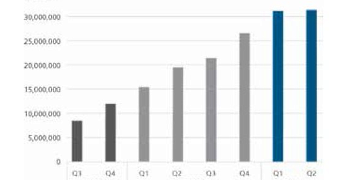Statistics about malware pieces users are exposed to are worrying, with reports saying that a new threat appears every quarter of a second, or 240 for every minute that passes.
Cybercriminals have increased their activity in the second quarter of 2014, which led to one per cent more malware compared to the first three months of the year.
According to a report recently released by McAfee, with data collected in Q2 2014, the number of new threats rose to over 31 million samples, which is the largest amount the company has recorded in a single quarter.
Some 700,000 of these were designed for mobile platforms, less than what was recorded in the first quarter of the year. However, the total number of mobile threats picked up by McAfee systems increased by 17%, breaking the 4.5 million barrier.
The report brings some good news though, as new ransomware samples recorded a significant drop in Q2, with 63,857 samples being detected. This is still a large number, but it is 63% lower than the amount of new pieces caught in Q1.
It appears that starting with the second half of 2013, the availability of fresh ransomware threats is in decline, the trend continuing to the latest monitored period of time.
The number of new rootkits, on the other hand, seems to have stagnated close to 100,000, compared to the previous quarter. The company informs that a single bootkit family, dubbed Gupboot, is responsible for this high number of samples.
However, McAfee predicts an increase in this type of risk once cybercriminals learn how to circumvent protections for 64-bit architecture. “We believe that new rootkit samples will grow as attackers learn how to circumvent security protection in 64-bit systems,” write the researchers in the report.
Another type of threat that saw an increase in the second quarter of the year is malware with signed binaries, which passed three million new samples, according to the latest information from McAfee.
It appears that denial-of-service (DoS) attacks remained the preferred network attack for the cybercriminals, and the country hosting the most phishing URLs is the United States, with 50% of the total malicious links.
The US is also the region where most spam addresses were hosted in Q2 2014, accounting for 42% of the recorded batch; in second place, with 33%, comes the United Kingdom.
The most active botnet seems to be Dapato, also known as Carberp, responsible for spreading the largest number of infections. It accounted for 19% of McAfee’s worldwide prevalence map.

 14 DAY TRIAL //
14 DAY TRIAL //